With its breathtaking natural beauty and rugged terrain, Montana has long been a hot spot for nature lovers. But amidst the natural beauty and majesty lies a growing problem: invasive species. These interlopers have made their way into the state’s fragile ecosystems, disrupting the natural order and threatening the native species that call Montana home.
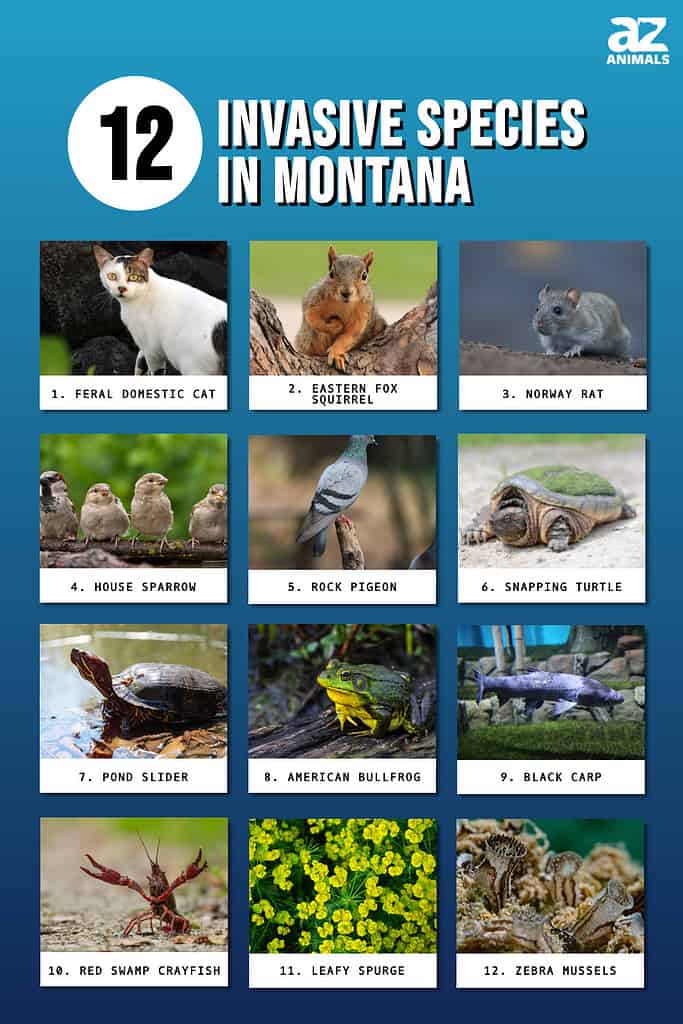
From invasive plants that choke out native flora to voracious animals that decimate local populations, the impact of these invaders is far-reaching and significant. So let’s take a closer look at these invasive species in Montana and learn everything about them!
1. Feral Domestic Cat (Felis catus)

There are over 100 million feral and outdoor cats in the US wreaking havoc on the environment as invasive species.
©Brocken Inaglory | CC BY-SA – License
While many cats enjoy the cozy life of domestic pets in homes, there are still plenty of feral cats roaming freely in the great outdoors of Montana. These wild cats look similar to their domesticated counterparts. However, they often have more prominent muscles around their head, neck, and shoulders, with short coats that come in a range of colors.
There are over 100 million feral and outdoor cats in the US wreaking havoc on the environment as invasive species. Their direct predation and disease-spreading abilities have devastating effects on humans, livestock, and wildlife alike.
Each year, feral cats in the US kill more than one billion birds. This makes outdoor domestic cats a notorious threat to biodiversity. They play a part in the extinction of 63 species of different animals. Even species already at risk of extinction, such as the piping plover, are further under threat by feral cats and their predatory ways.
2. Eastern Fox Squirrel (Sciurus niger)
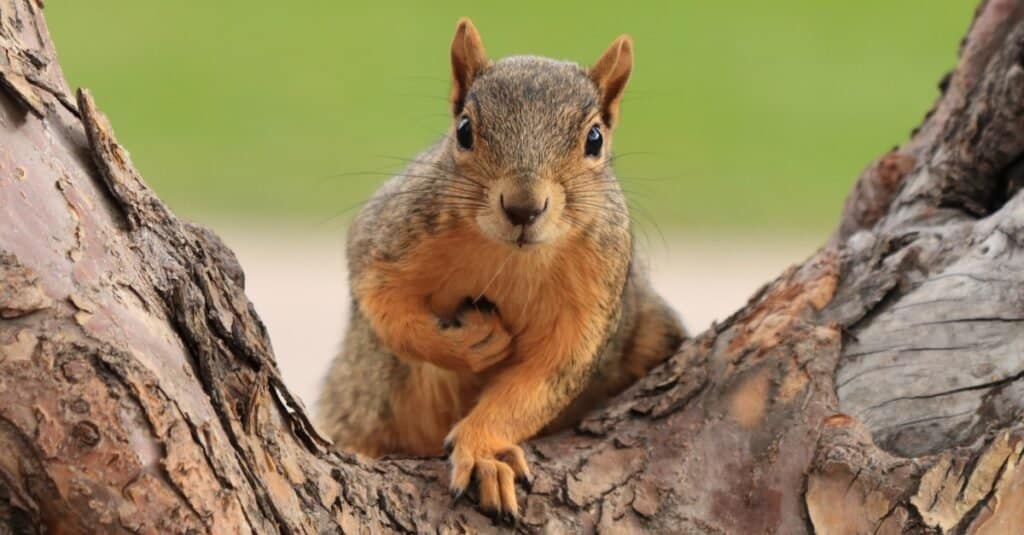
Despite their ability to adapt and thrive, these invasive squirrels are considered pests, causing damage to crops and properties.
©Vaclav Matous/Shutterstock.com
The eastern fox squirrel, which has a combination of orange-colored fur on its belly and gray and black fur on its back, along with a black and cinnamon mixed tail, is Montana’s largest tree squirrel. The eastern fox squirrel derives its name from the similarity of its fur coat to that of a gray fox.
In the 1940s, North Dakota initiated reintroduction efforts for this species, which led to their expansion into Montana via both natural and human-assisted transport pathways.
Despite their ability to adapt and thrive, these invasive squirrels are still pests, causing damage to crops and properties. Additionally, they are competing with Montana’s native uinta ground squirrels for food and nesting sites, which could potentially displace the native species.
3. Norway Rat (Rattus norvegicus)

Brown rats hurt plant species regeneration by feeding on seeds and seedlings, limiting the growth of many plants.
©JaklZdenek/Shutterstock.com
The Norway rat, or brown rat, is a widespread pest found throughout the world. It is one of the most common rodents you will encounter in Montana. This sturdy rat has a grayish-brown coat with black hairs that give it a grizzled appearance, large hairless ears, and a round, scaly tail.
They were introduced to the United States around 1775. Since then, they have spread all over the country. Norway rats are known for their ability to contaminate and consume food, damage buildings, and other structures by gnawing and burrowing, and spread diseases that affect humans and animals. ,
Additionally, brown rats hurt plant species regeneration by feeding on seeds and seedlings, limiting the growth of many plants. Norway rats are also predators that prey on a wide range of small animals, such as bird eggs, small birds, and reptiles, as well as intertidal and freshwater species.
4. House Sparrow (Passer domesticus)
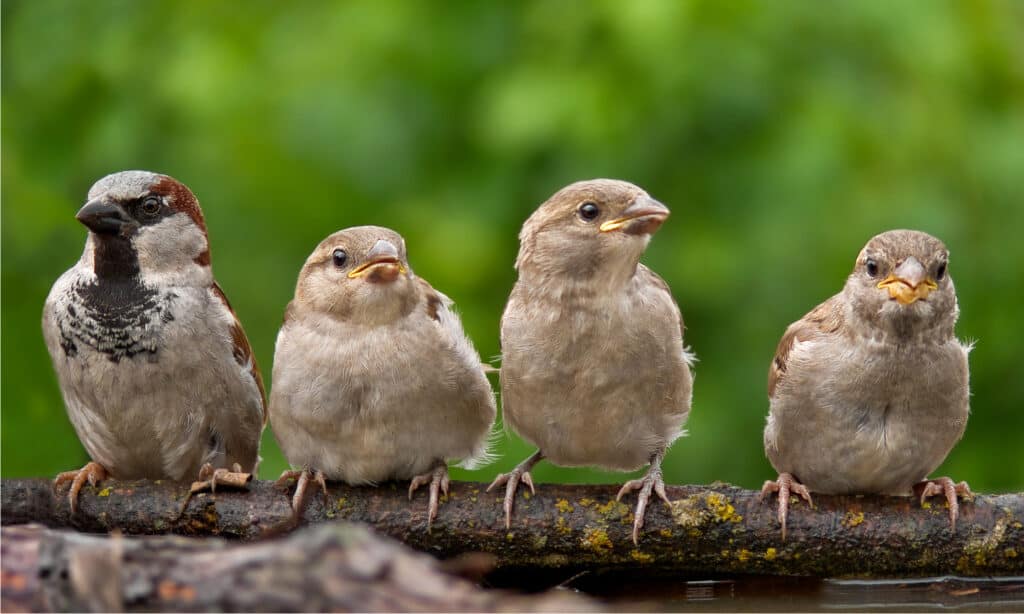
House sparrows are known for being robust colonizers and fiercely protective of their nests.
©Nick Vorobey/Shutterstock.com
Montana is now home to a large population of house sparrows, which are non-native to the area and originally came from the Middle East. These birds are abundant and are across the state. The male house sparrows have distinctive coloring, featuring gray heads, a black bib, rufous necks, and white cheeks. In contrast, female house sparrows have a more subdued appearance, with gray-brown underparts and a plain buffy-brown color overall.
The introduction of house sparrows to the United States from Europe occurred in the mid-1800s, to control insect pests. However, house sparrows did not fully occupy Montana until sometime between 1898 and 1908.
House sparrows are robust colonizers and fiercely protective of their nests. Since they do not migrate, they can displace native migratory songbirds from their nesting locations, particularly those of bluebirds, thus seriously affecting the populations of native birds.
5. Rock Pigeon (Columba livia)
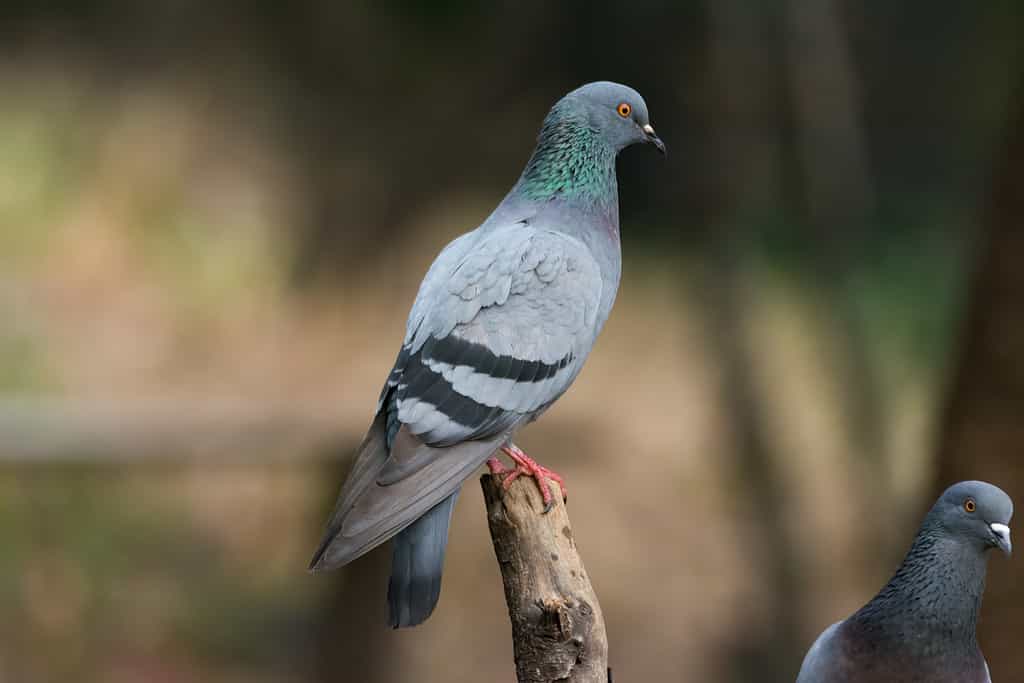
Introduced to
North America
by Europeans in the 1600s, pigeons were likely brought over as a food source and then escaped into the wild.
©iStock.com/Malcolm
The rock pigeon is a common dove species in Montana, but it is mostly living in urban environments. This plump bird features pointed wings, a rounded tail, and small pink, red, or blackish-gray feet and legs. Its small bill has a fleshy cere on its upper part, and rings of skin encircle its round eyes.
Introduced to North America by Europeans in the 1600s, pigeons were likely brought over as a food source and then escaped into the wild.
Rock pigeons cause crop damage, and their large flocks can displace native bird populations in urbanized areas. Another concern is that these invasive pigeons carry a variety of parasites and pathogens that could threaten the health of Montana’s native bird species. It’s common to come across droppings, which can fall from the sky and land on one’s clothes or vehicle, depending on one’s luck!
6. Snapping Turtle (Chelydra serpentina)
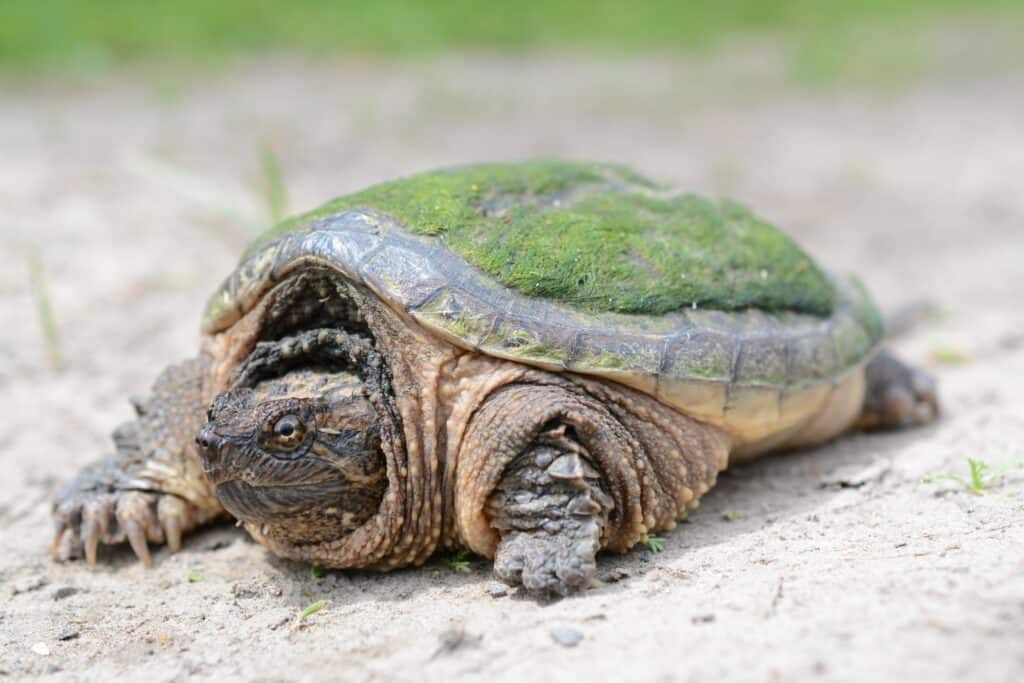
The Montana FWP has identified them as a threat to native species in the western region.
©Trevor Meunier/Shutterstock.com
In Montana, snapping turtles possess a unique plastron covering less than half of their ventral surface. Their carapace is distinguished by keeled scutes and a tail roughly the same length as the carapace.
While they are native to the Nearctic region, snapping turtles are non-native to western Montana, as they are only naturally east of the Divide. The Montana FWP has identified them as a threat to native species in the western region.
Snapping turtles prey on amphibians, snakes, waterfowl, and smaller turtles. They play a role in decreasing the native population by out-competing them for food. They are also highly successful predators due to a lack of natural predators in Montana. Therefore, wherever snapping turtles are, they become the top predator, posing a significant threat to native species.
7. Pond Slider (Trachemys scripta)
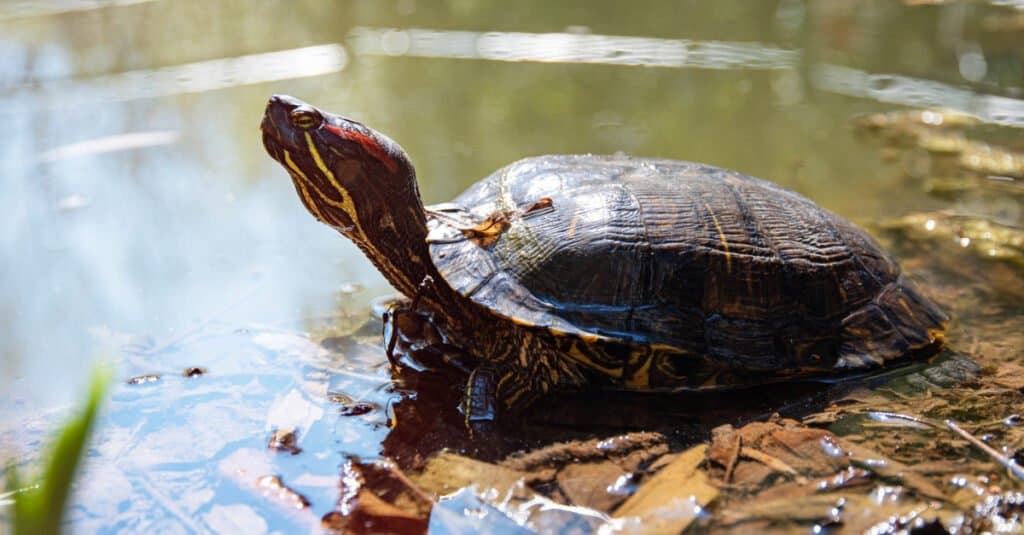
The pond slider is most well-known for its beautiful, classic shell.
©iStock.com/Olga Buntovskih
The pond slider, a medium-sized freshwater turtle, is another invasive species in Montana. Typically, the turtle’s carapace and skin are brown to olive in color, with yellow stripes. The plastron is usually yellow, although it can be brownish orange, and is marked by dark spots on each shell plate’s center.
Sadly, in Montana, the pond slider has become a common sight due to the release of unwanted pets by humans. The pond slider is among the 100 most invasive species globally. This turtle poses a significant threat to freshwater ecosystems worldwide, including those in Montana.
The pond slider’s ability to adapt and thrive in new environments gives it an edge over other turtle species. Its larger size enables it to dominate food sources, basking sites, and nesting locations in its non-native habitat.
Additionally, the pond slider can transmit diseases or parasites to new environments. Bringing In salmonella, which can be harmful to humans and other animals.
8. American Bullfrog (Lithobates catesbeianus)
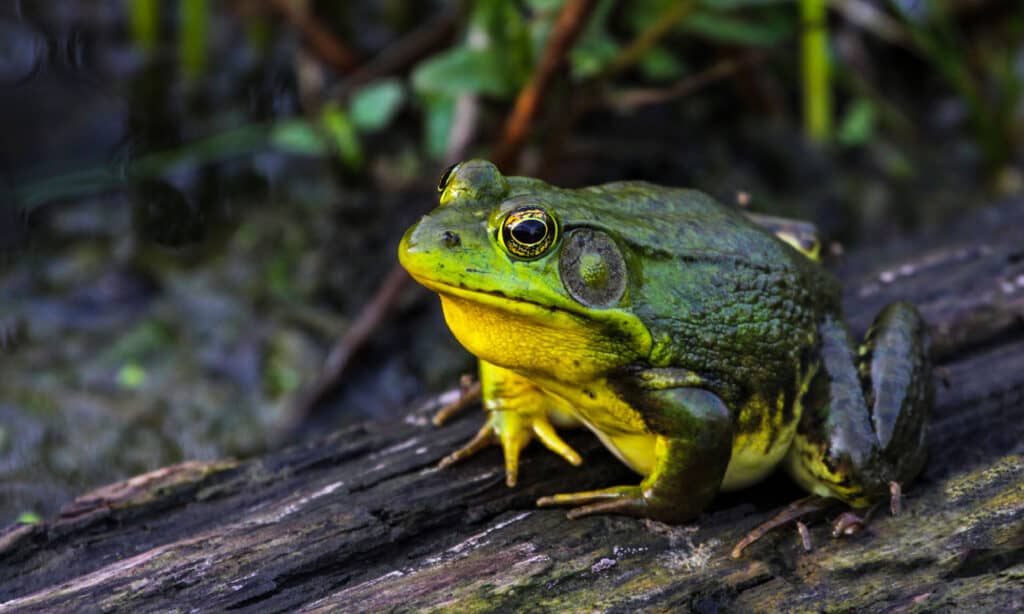
Their introduction to western regions, including Montana, was largely driven by their use as recreational hunting and food items.
©iStock.com/187715314
The American bullfrog is indigenous to the eastern region of North America. It has become an invasive species in Montana. These frogs have a color that ranges from brown to green and are often adorned with dark brown spots. They possess fully webbed hind feet, and their bellies are either white or yellow, sometimes marked with black spots or patterns.
Their introduction to western regions, including Montana, was largely driven by their use as recreational hunting and food items. This was likely due to the decline of native frogs caused by human hunting and consumption.
Moreover, the American bullfrog can act as a carrier of the chytrid fungus, which negatively impacts frogs and amphibians. The fungus contributes to the dwindling of native amphibian populations worldwide. This frog also competes and prey on the native species, further exacerbating their decline.
9. Black Carp (Mylopharyngodon piceus)
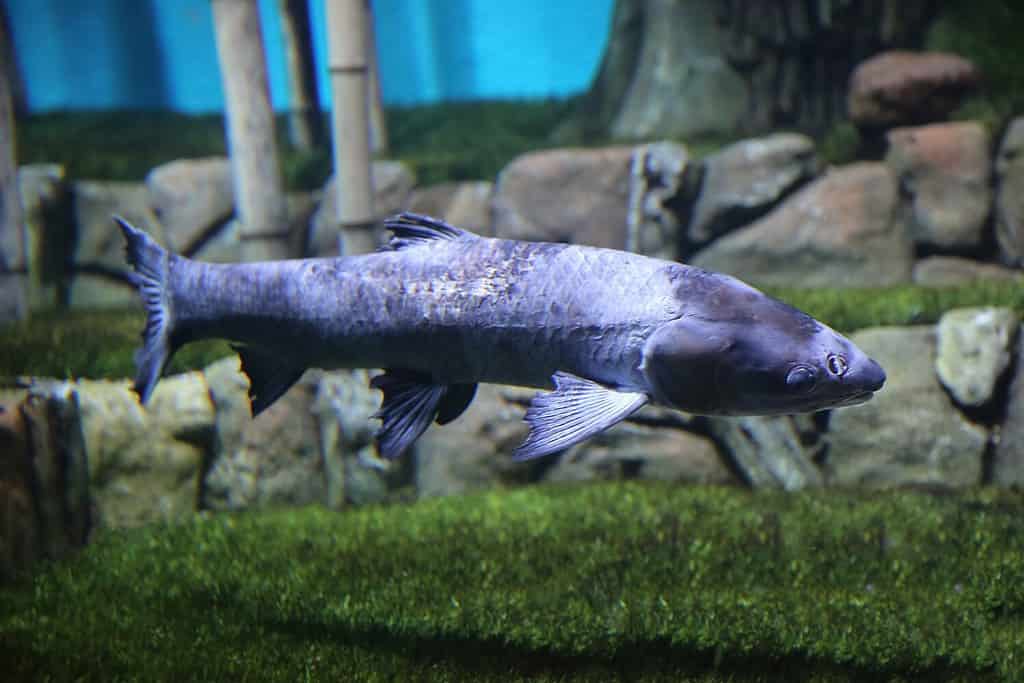
It can be fatal to vulnerable species such as native freshwater mussels.
©ivSky/Shutterstock.com
The native range of the black carp is in East Asian rivers and lakes, extending from China to Vietnam. These fish possess an elongated, flattened body and a pointed head with a small, toothless mouth. They exhibit a brown to black coloration on their body, with bluish-grey to white on their belly, and have a keel that runs from their pelvic fins to their anal fin.
Black carp came to the United States accidentally in the 1970s. Introduced as part of a grass carp shipment from Asia.
The presence of invasive carp in lakes and rivers leads to severe harm to the local fish populations by outcompeting other fish for resources and habitat. These fishes contribute to a decline in water quality. It can be fatal to vulnerable species such as native freshwater mussels. Furthermore, black carp carry many parasites and diseases that transmit to indigenous species.
10. Red Swamp Crayfish (Procambarus clarkii)
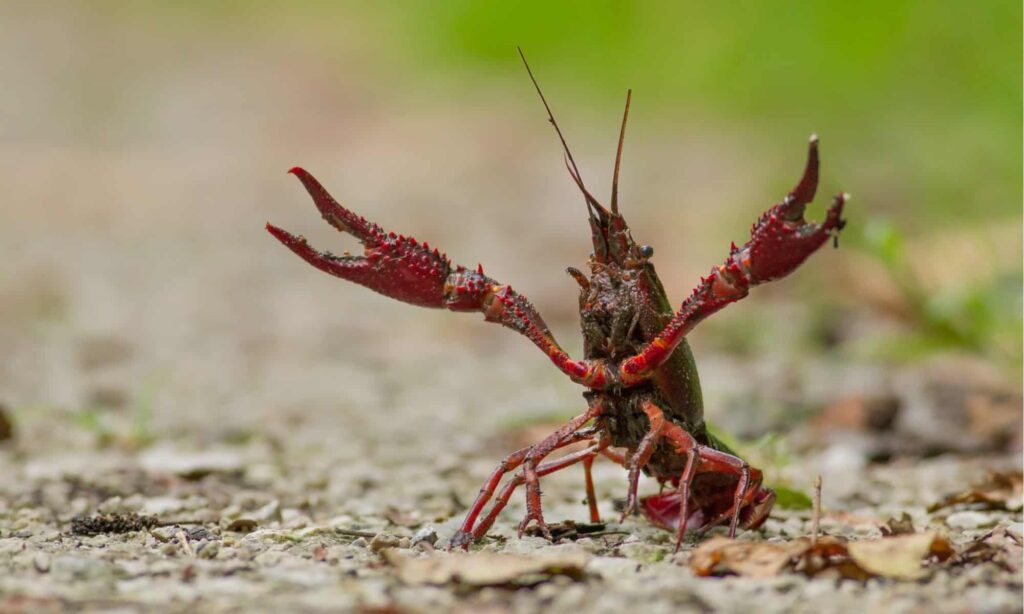
These red swamp crayfish are known for their aggressive competition with native crayfish species over food sources and living spaces.
©rugco/Shutterstock.com
The red swamp crayfish, a highly invasive alien species, poses a significant threat to Montana’s ecosystems. Originally, these crayfish were native to the coastal regions stretching from the Florida panhandle to Mexico. Their characteristics include their dark red hue, elongated claws, and distinctive red bumps adorning the front and sides of their foremost pair of legs.
According to speculations, the red swamp crayfish were introduced to Montana in two probable ways. Either by fishermen who bought live crayfish for consumption and then utilized them as bait or through the aquaculture industry in the area.
These red swamp crayfish are aggressive competitors with native crayfish species over food sources and living spaces. In regions where their populations become dense, their feeding habits can lead to a decline in aquatic plant life.
11. Leafy Spurge (Euphorbia esula)
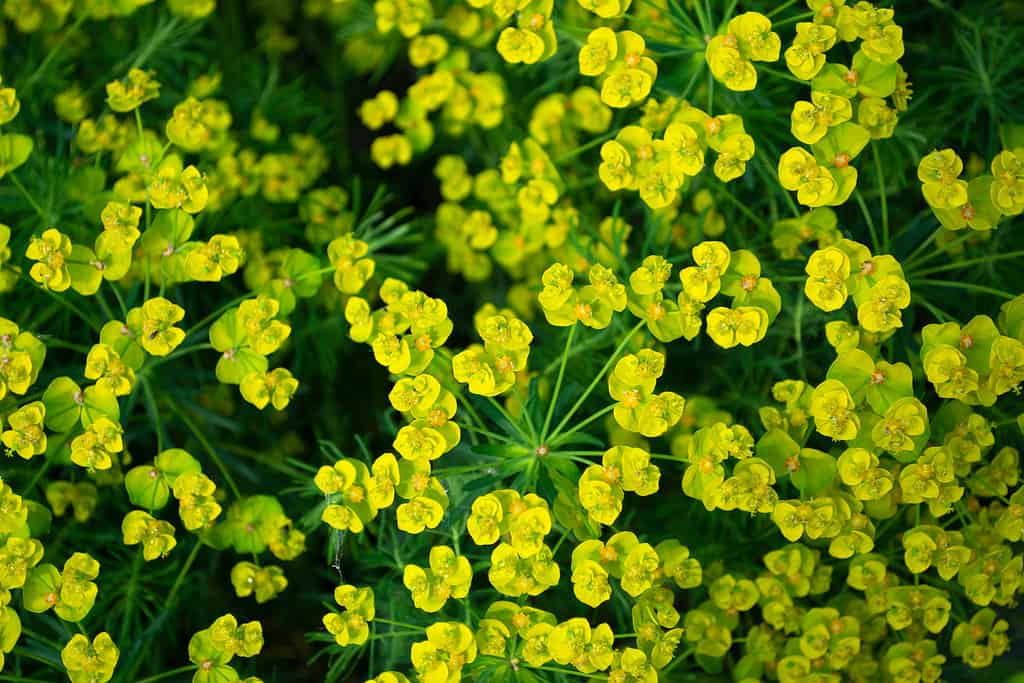
It is crucial to prevent its spread as it can reduce biodiversity and threaten sensitive species in areas like Montana.
©Oksana Shevchenko/Shutterstock.com
Originally native to Eurasia, leafy spurge has now spread throughout the United States. Leafy spurge is a perennial plant that has a long lifespan. It can reproduce via both seeds and underground adventitious buds located on the root and root crown. Its narrow, waxy leaves are up to 3 inches long and have smooth edges. The leaves have a bluish-green hue that changes to yellowish or reddish-orange in the late summer season.
Leafy spurge is an invasive species and is on the control noxious weed list. It is crucial to prevent its spread as it can reduce biodiversity and threaten sensitive species in areas like Montana.
Due to the potential adverse effects of the milky sap produced by leafy spurge, cattle, and horses often steer clear of areas where this weed grows. This avoidance behavior is likely because ingesting leafy spurge can result in severe diarrhea. Additionally, when mowing the plant, the sap can cause skin blistering and irritation.
12. Zebra Mussels (Dreissena polymorpha)
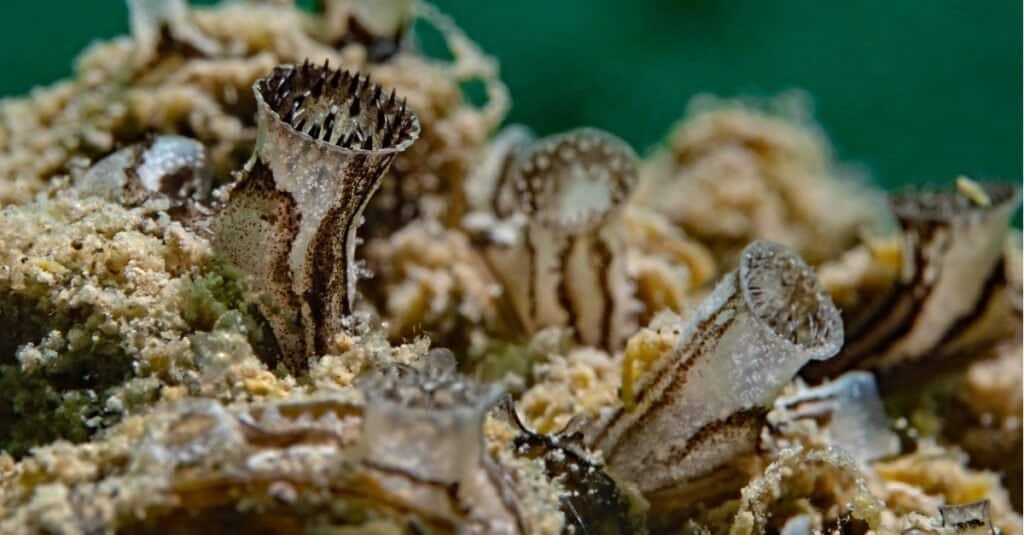
The presence of
zebra mussels
in ecosystems can have a severe negative impact.
©iStock.com/scubaluna
Zebra mussels are small aquatic creatures that have unique D-shaped shells. They have a pattern of alternating brown and yellow stripes. Their shells consist of two valves joined by a ligament. It can grow up to one and a half inches in length.
They are originally native to the drainage basins of the Caspian, Aral, and Black Seas in Eastern Europe. The introduction of zebra mussels to the United States began through ballast water discharged by ships arriving from European ports. The good news is that this species is not yet established in Montana.
The presence of zebra mussels in ecosystems can have a severe negative impact. They can attach themselves to and harm native mussels. They also filter out the algae that serve as a vital source of sustenance for other native species. Power plants must allocate millions of dollars to remove zebra mussels from their water intakes to avoid costly damages.
Given that a single female zebra mussel can release up to a million eggs per season, even a single mussel can pose a significant threat to Montana’s water resources and boats. It is crucial to note that transporting invasive species like zebra mussels into Montana’s water bodies is illegal. Illegal, even if done unintentionally.
Summary of 12 Invasive Species in Montana
| Invasive Species | Threats to Native Habitat | |
|---|---|---|
| 1 | Feral Domestic Cat | Responsible for killing over one billion birds per year and have contributed to the extinction of 63 species |
| 2 | Eastern Fox Squirrel | Competition with native squirrels could lead to displacement |
| 3 | Norway Rat | Spread diseases, contaminate food, and damage buildings |
| 4 | House Sparrow | Displace native migratory songbirds – including bluebirds |
| 5 | Rock Pigeon | Damage crops and cause displacement of native birds |
| 6 | Snapping Turtle | Causing depletion of native amphibians, waterfowl, snakes, and smaller turtles |
| 7 | Pond Slider | Taking over native turtle habitats |
| 8 | American Bullfrog | Is a carrier of the chytrid fungus – which hurts native frogs and amphibians |
| 9 | Black Carp | Contributes to a decline in water quality and transmits disease to freshwater mussels |
| 10 | Red Swamp Crayfish | Compete aggressively with native crayfish and cause decline in aquatic plant life |
| 11 | Leafy Spurge | Milky sap causes diarrhea in cows and horses and blisters humans’ skin when its mowed |
| 12 | Zebra Mussels | Attach themselves and harm native mussels and cause water plants millions of dollars to repair damage |
The photo featured at the top of this post is © iStock.com/VitalisG
Thank you for reading! Have some feedback for us? Contact the AZ Animals editorial team.







